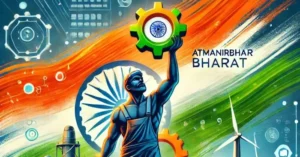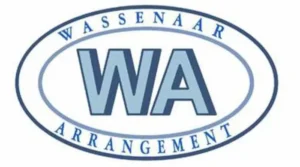1. NCRB Data on Crime Against Children – 2023 – Governance

Why in News?
The National Crime Records Bureau (NCRB) released its 2023 report, highlighting a worrying increase in crimes against children in India. This calls for urgent reforms in child protection mechanisms and greater public awareness.
Key Highlights of the Report
1. Overall Statistics
Total Cases Reported: 1,77,335 cases of crimes against children in 2023.
Year-on-Year Increase: 9.2% rise compared to 2022.
Crime Rate: 9 cases per 1 lakh child population (significantly lower than 36.6 in 2022, indicating change in calculation or reporting practices).
2. Major Categories of Crime
a) Kidnapping & Abduction (45% of total cases)
Total: 79,884 cases involving 82,106 victims.
General abduction: 58,927 cases.
Abduction for marriage: 14,637 cases (mainly targeting minor girls).
b) Sexual Offences under POCSO Act (38.2%)
Total POCSO Cases: 67,694.
Penetrative Sexual Assault: 40,434 cases affecting 40,846 victims.
Offenders Known to Victims: 39,076 cases – highlighting the prevalence of abuse by family, relatives, or acquaintances.
3. Age-wise Victim Profile
Below 6 years: 762 victims.
6–12 years: 3,229 victims.
12–16 years: 15,444 victims.
16–18 years: 21,411 victims.
Insight: The older the child, the higher the vulnerability to crimes like sexual assault and abduction—likely due to mobility, social exposure, and gender-based targeting.
4. Other Serious Crimes
Murders: 1,219 cases (including 89 cases linked to rape or POCSO violations).
Simple Hurt: 3,050 cases.
Abetment to Suicide: 373 cases.
Child Marriage Cases: 6,038 cases (under Prohibition of Child Marriage Act).
Child Labour Cases: 1,390 (under Child Labour Act).
5. State-wise Distribution
Highest Reporting State: Madhya Pradesh – 22,393 cases.
Significant Increases: Assam (10,174) and Bihar (9,906).
Delhi: 7,769 cases, but with disproportionately high rate due to dense urban population.
6. Investigation & Legal Follow-up
Total Cases Investigated: 2,57,756.
Cases Chargesheeted: 1,12,290 (64.3%).
Pending Cases: 80,198 still unresolved at the end of the year.
Concern: Despite high reporting, a large number of cases remain pending, reflecting investigative and judicial delays, especially in POCSO-related crimes.
Implications and Way Forward
1. Need for Systemic Reforms
Strengthen child protection mechanisms (e.g., Child Welfare Committees, Juvenile Justice Boards).
Improve POCSO Act enforcement and support for child victims (fast-track courts, legal aid).
2. Awareness and Preventive Measures
School-level sensitization on abuse prevention.
Community vigilance and improved helpline/reporting mechanisms (e.g., Childline 1098).
3. Institutional Strengthening
Better training of police and judicial officers in child-sensitive procedures.
Improve coordination between police, child welfare bodies, and NGOs.
Exam Connect – Possible Questions
Prelims
1. Consider the following statements regarding crimes against children as per NCRB 2023 data:
1.Kidnapping and abduction account for the majority of crimes against children.
2.The majority of POCSO offenders were strangers to the victims.
Which of the statements is/are correct?
A. 1 only
B. 2 only
C. Both 1 and 2
D. Neither 1 nor 2
Answer:A. 1 only
Explanation: While kidnapping is the most reported category, most POCSO offenders were actually known to the victim.
2. Which of the following Acts was invoked in over 6,000 cases related to children in 2023?
A. Child Labour (Prohibition and Regulation) Act
B. Protection of Children from Sexual Offences (POCSO) Act
C. Prohibition of Child Marriage Act
D. Juvenile Justice (Care and Protection of Children) Act
Answer:C. Prohibition of Child Marriage Act
Explanation: 6,038 cases were registered under the Prohibition of Child Marriage Act in 2023.
Mains
1. The NCRB 2023 data reveals a persistent rise in crimes against children, especially sexual offences and kidnappings. Critically analyze the causes and suggest comprehensive measures to address this growing threat.
2. Despite the enactment of laws like POCSO and the Child Labour Act, crimes against children remain a serious concern in India. Discuss the gaps in implementation and propose systemic reforms to ensure better protection of children.
2. More Women Join the Labour Force, but Are They Really Employed? – Economy
Why in News?
India’s Female Labour Force Participation Rate (FLFPR) has witnessed a significant rise from 23.3% in 2017–18 to 41.7% in 2023–24 — marking a rare reversal in a long-declining trend. While this appears promising on the surface, deeper analysis reveals troubling patterns: a rise in informal, unpaid, or low-income employment, especially in agriculture and family enterprises, rather than in secure wage jobs.
Key Takeaways
1. Sharp Rise in FLFPR
FLFPR (Female Labour Force Participation Rate) increased from 23.3% (2017–18) to 41.7% (2023–24).
This is the first notable increase after years of steady decline.
FLFPR is a key metric for measuring gender inclusion in the economy.
2. Unequal Quality of Employment
Despite higher participation:
Earnings have declined, especially for the self-employed and salaried workers.
Secure wage employment remains limited.
Rise in participation is mostly into informal, low-paying sectors, not formal jobs.
3. Agriculture as a Fall-back, Not Progress
Share of rural women in agriculture rose from 71.1% (2018–19) to 76.9% (2023–24).
Contradiction: Instead of diversifying into services or industry, women are returning to or remaining in agriculture.
Indicates distress employment, not economic empowerment.
4. Rise in Informal Work
a) Unpaid Helpers in Household Enterprises
Increased from 9.1% to 19.6%.
Often counted as employed, but receive no income.
b) Self-Employment Surge
Share of “own-account workers and employers” grew from 4.5% to 14.6%.
However, this has not led to higher earnings or stability.
c) Decline in “Domestic Duties”
Women citing “domestic duties” dropped from 57.8% (2017–18) to 35.7% (2023–24).
But this does not automatically equate to genuine economic empowerment, especially if replaced by unpaid or underpaid roles.
5. Sectoral Shifts & Blurred Employment Definitions
Decline in secondary (industry) and tertiary (services) sector jobs.
Overlap between domestic chores and informal helping roles blurs what is counted as “employment.”
Are these women truly participating in the labour market, or just being relabelled as “employed” without actual income or autonomy?
6. Declining Real Incomes
Real earnings have fallen across job categories, including salaried workers and employers.
Only casual workers have seen a slight increase in wages.
Self-employment is rising, but without financial returns, indicating economic vulnerability.
Implications & Analysis
Is the Rise in FLFPR Real Progress?
Not necessarily. Much of the increase reflects survival strategies rather than economic inclusion.
Women are visible in statistics, but invisible in earnings and agency.
Rural Economy Dependency
Economic shocks (like COVID-19, inflation, urban job crunch) may have pushed rural women back into low-return agricultural or family-based work.
Structural Issues
Lack of quality job creation, especially in rural areas.
Poor access to credit, markets, skill training, and childcare facilities.
Cultural and safety barriers further limit women’s mobility and job choices.
Way Forward
1. Focus on Quality Jobs
Promote formal employment, especially in manufacturing and services for women.
Expand MUDRA, Start-Up India, and Skill India programs with a gender lens.
2. Recognize & Support Unpaid Work
Institutional support for women in household enterprises.
Recognition of unpaid care work in policy and planning.
3. Rural Non-Farm Job Creation
Develop rural industries, agro-processing, and micro-enterprises.
Incentivize private sector to employ women in non-agricultural roles.
4. Legal & Social Measures
Strengthen enforcement of equal pay, maternity benefits, and safe working conditions.
Improve childcare infrastructure and workplace flexibility to retain women in jobs.
Exam Connect – Possible Questions
Prelims
1. Consider the following statements regarding Female Labour Force Participation in India:
1.The FLFPR has continuously declined since 2011–12.
2.In 2023–24, most new female workers entered into wage employment in the services sector.
Which of the above is/are correct?
A. 1 only
B. 2 only
C. Both 1 and 2
D. Neither 1 nor 2
Answer: D. Neither 1 nor 2
Explanation: FLFPR increased after 2017–18. Also, most new participation was in agriculture and unpaid roles, not wage employment.
2. Which sector has shown the highest increase in female employment in rural India as per the latest FLFPR data?
A. Industry
B. Services
C. Agriculture
D. Construction
Answer:C. Agriculture
Explanation: The share of rural women in agriculture increased from 71.1% to 76.9%.
Mains
1. The rise in female labour force participation in India masks the growing informalization and invisibility of women’s work. Critically examine this trend in light of recent data.
2. Despite rising female labour force participation, Indian women continue to face barriers to economic independence. Discuss the structural and socio-cultural factors responsible and suggest measures to address them.
3. Atmanirbhar Bharat in Natural Resources – A Pillar for Viksit Bharat 2047 – Economy

Why in News?
As India aims to become a Viksit Bharat (Developed India) by 2047, achieving Atmanirbhar Bharat (self-reliance), especially in the natural resources sector, is critical. Presently, this sector contributes to over 50% of India’s total imports, signaling a heavy reliance on foreign nations for vital materials like oil, copper, and gold.
Key Highlights
1. Heavy Import Dependence in Natural Resources
Oil, copper, and gold constitute 60% of India’s total resource imports.
India imports:
~90% of oil
~95% of copper
~99% of gold
Despite significant domestic reserves of coal and bauxite, imports in these commodities continue unnecessarily.
This import-dependence not only increases the trade deficit but also impacts energy security and strategic autonomy.
2. Untapped Potential of India’s Natural Resources
India is geologically rich, comparable to Australia and Africa.
However, many mineral reserves remain underexplored or underutilized.
Factors: Bureaucratic delays, lack of private sector participation, poor technology infusion, and policy bottlenecks.
3. Strategic Reforms to Achieve Self-Reliance
To unlock India’s resource potential and reduce imports, the following policy measures are recommended:
a) Encourage Startups in Exploration
Move beyond relying solely on large PSUs.
Support agile exploration start-ups for quicker innovation and cost-effective methods.
b) Expedited Clearance via Self-Certification
Reduce procedural delays in exploration-to-mining transition.
Self-certification model can enhance ease of doing business and accelerate project implementation.
c) Revitalize Dormant Mines
Underperforming or unused mines can be revived via private sector participation and modern technologies.
d) Level Playing Field for Private Sector
Ensure regulatory parity between public and private entities.
Attract private investment by reducing policy uncertainty and streamlining approvals.
4. Benefits of the Reform Agenda
| Area | Benefits |
|---|---|
| Strategic Independence | Reduced reliance on imported critical minerals and hydrocarbons. |
| Local Economic Development | Employment generation in mineral-rich rural and tribal regions. |
| Fiscal Benefits | Increased revenues through royalty and taxes, without extra government spending. |
| Industrial Growth | Ensures raw material security for industries like steel, energy, electronics. |
| Energy Security | Aligns with India’s energy transition goals and net-zero roadmap. |
Exam Connect – Possible Questions
Prelims
1. Which of the following resources account for the majority of India’s natural resource imports?
1.Coal
2.Gold
3.Copper
4.Oil
A. 1, 2, and 3
B. 2, 3, and 4
C. 1, 2, and 4
D. All of the above
Answer:B. 2, 3, and 4
Explanation: Gold, copper, and oil make up 60% of India’s resource imports. Despite having reserves, coal imports are not as dominant in this context.
2. What is the primary objective of encouraging private sector participation in India’s natural resource sector?
A. Increase exports of raw materials
B. Reduce government control over mining
C. Minimize import dependence and improve efficiency
D. Privatize public sector undertakings
Answer:C. Minimize import dependence and improve efficiency
Explanation: The goal is to reduce import dependence and enhance operational efficiency through competition and innovation.
Mains
1. India’s heavy dependence on imported natural resources poses a strategic and economic risk. Discuss how Atmanirbhar Bharat in the natural resources sector can strengthen India’s vision of Viksit Bharat 2047.
2. Despite being geologically rich, India remains highly dependent on resource imports. Examine the key challenges in harnessing domestic mineral wealth and suggest policy measures to address them.
4. False Smut Disease in Paddy – An Emerging Threat to Crop Health – Science & Technology

Why in News?
Recent reports from Punjab indicate that False Smut Disease has significantly affected maturing paddy crops, causing substantial agricultural and economic losses during the harvest season.
Key Takeaways
What is False Smut Disease?
A fungal disease that affects rice (paddy).
Caused by the pathogen Ustilaginoidea virens.
Commonly known as Lakshmi Disease or Oothupathi Disease in some regions.
Primarily targets the grains, affecting their quality and market value rather than destroying the plant itself.
Additional Details
1. Nature and Impact of the Disease
Affects panicles (the flowering head of the rice plant).
Converts individual grains into greenish-yellow or orange spore balls, which later turn black.
Infected grains appear chalky, reducing:
Grain weight
Seed germination potential
Milling quality
Yield losses are influenced by the number of infected panicles and severity within each.
2. Conditions Favoring False Smut
a) Climatic Conditions
Warm and humid environment.
Optimal temperatures: 25–30°C
Humidity: Above 80%
b) Agronomic Practices
Excess nitrogen fertilizer leads to lush, susceptible growth.
Stubble retention: Infected debris from the previous crop can harbor spores.
c) Soil and Water Management
Poor field drainage and dense crop stands promote fungal survival and spread.
3. Consequences of Infection
| Parameter | Effect |
|---|---|
| Grain Quality | Reduced due to chalkiness and discoloration |
| Yield | Decreases with increase in infection rate |
| Seed Viability | Significantly impacted |
| Market Value | Lower due to unattractive and light grains |
4. Management Challenges
Fungicide Resistance: Overuse has led to reduced effectiveness of chemical control.
Environmental Pollution: Excessive spraying contaminates soil and water.
Limited Preventive Measures: Currently, few resistant varieties are available.
Control & Management Strategies
1. Chemical Measures
Timely application of fungicides during the flowering stage (e.g., Propiconazole).
Use of systemic fungicides with caution to delay resistance.
2. Cultural Practices
Crop rotation to break fungal life cycle.
Removal and destruction of infected crop residues.
Balanced fertilizer application, especially nitrogen.
Use of certified disease-free seeds.
3. Research-Oriented Solutions
Development of disease-resistant paddy varieties.
Biological control agents to reduce dependency on chemicals.
Broader Implications
Punjab is a major rice-producing state. An outbreak here affects:
Food security
Farmer incomes
Grain quality for domestic and export markets
Climate change, with its increasing temperatures and erratic rainfall, could worsen fungal disease outbreaks like false smut.
Exam Connect – Possible Questions
Prelims
1. False Smut Disease in rice is caused by which of the following pathogens?
A. Magnaporthe oryzae
B. Ustilaginoidea virens
C. Xanthomonas oryzae
D. Fusarium oxysporum
Answer:B. Ustilaginoidea virens
Explanation: Ustilaginoidea virens is the fungal agent responsible for false smut in paddy.
2. Which of the following factors increases the susceptibility of rice to false smut disease?
1.Excessive nitrogen application
2.High humidity
3.Use of fungicide-tolerant seed
4.Crop residue retention
A. 1, 2 and 4
B. 1 and 3 only
C. 2, 3 and 4
D. All of the above
Answer:A. 1, 2 and 4
Explanation: Excess nitrogen, high humidity, and infected residues contribute to the spread. Use of fungicide-tolerant seed is not directly linked.
Mains
1. False smut disease is an emerging challenge in paddy cultivation. Discuss the agronomic and climatic factors responsible for its spread and suggest sustainable management strategies.
2. In the context of increasing plant diseases like false smut, evaluate the role of integrated disease management (IDM) in ensuring crop health and productivity.
5. India Needs Double Growth to Escape the Jobs Trap – Economy

Why in News?
A report by Morgan Stanley, a global financial firm, underscores a critical warning: India must nearly double its GDP growth rate to effectively tackle the unemployment and underemployment crisis, particularly among youth and women. Without rapid economic expansion, India risks wasting its demographic dividend and facing long-term socio-economic challenges.
Key Takeaways
1. Current Growth vs Required Growth
| Metric | Growth Rate Needed |
|---|---|
| To keep unemployment stable | 7.4% GDP growth |
| With higher labour participation (63%) | 9.3% GDP growth |
| To significantly reduce unemployment | 12.2% GDP growth |
| Current average GDP growth (10 years) | 6.1% |
| RBI estimate for FY 2025 | 6.5% |
| April–June 2025 quarter (recent data) | 7.8% |
Even the current 6.5–7.8% growth may not be enough to absorb the growing workforce.
2. Rising Youth Unemployment
All-India unemployment rate: 5.1%
Youth (15–29 years): 14.6%
Female youth in urban areas: 25.7%, higher than male counterparts
Youth unemployment in South Asia: 17.6% (highest in the region)
Despite India being one of the fastest-growing economies, young people are struggling to find meaningful work.
3. Demographic Pressure
Median age: 28.4 years
Workforce expansion: Expected to grow by 8.4 crore (84 million) in the next decade
Challenge: Job creation not keeping pace with the youth entering the labour market
4. Underemployment and Return to Agriculture
Many workers, particularly youth, are turning to agriculture due to lack of formal job opportunities.
Underemployment: Workers are engaged in jobs below their skill level and low productivity.
Farm employment is often a fallback option, not a sign of rural prosperity.
5. Poverty and Economic Urgency
Around 603 million people in India live on less than $3.65/day, highlighting:
Persistent poverty
Low per capita income
Urgency for inclusive economic transformation
6. Global and Regional Context
Youth unemployment across Asia: 16%
Youth unemployment in the US: 10.5%
Indicates a structural problem across emerging economies, but India’s scale makes it more acute.
7. Future Threats: AI and Automation
Adoption of Artificial Intelligence (AI) could:
Displace low-skilled and routine jobs
Exacerbate the unemployment crisis
Calls for reskilling and upskilling programs to prepare the workforce for tech-driven economies
8. Export and Industrial Underperformance
India’s share in global exports: Only 1.8%
Signals untapped potential for:
Job creation
Manufacturing growth
Global competitiveness
Challenges Behind the Jobs Trap
| Challenge | Impact |
|---|---|
| Sluggish formal job creation | Forces youth into informal or underpaid work |
| Low female participation and high urban female unemployment | Wastes demographic potential |
| Skill mismatch | Educated youth not employable in current sectors |
| Lack of private sector expansion | Limits industrial and services sector absorption |
| Over-reliance on agriculture | Low productivity, underemployment |
Way Forward: How to Escape the Jobs Trap
1. Accelerate GDP Growth
Focus on labour-intensive sectors: textiles, construction, tourism, MSMEs
Target consistent growth of 8–9%+ to absorb the expanding workforce
2. Boost Manufacturing and Exports
Implement PLI schemes more inclusively
Improve logistics, infrastructure, and ease of doing business
Tap into global supply chains
3. Skilling and Reskilling
National-level programs focused on:
AI and digital skills
Green jobs
Vocational education
Bridge the education-employment gap
4. Improve Female Labour Force Participation
Provide safe, accessible workplaces
Invest in childcare infrastructure
Incentivize flexible and remote work options
5. Strengthen Private Sector Employment
Create a supportive ecosystem for entrepreneurship and start-ups
Encourage labour market reforms to promote formal hiring
Exam Connect – Possible Questions
Prelims
1. According to recent reports, what is the estimated GDP growth required for India to significantly reduce unemployment?
A. 6.5%
B. 7.4%
C. 9.3%
D. 12.2%
Answer:D. 12.2%
Explanation: To significantly reduce unemployment, India would need to grow at 12.2%.
2. Which of the following factors contribute to India’s current employment crisis?
1.High female urban youth unemployment
2.Declining agricultural productivity
3.High labour participation rate
4.Limited export share in global markets
A. 1 and 4 only
B. 1, 2, and 4
C. 2 and 3 only
D. All of the above
Answer:B. 1, 2, and 4
Explanation: Factors like female unemployment, return to low-productivity agriculture, and limited global export presence contribute to the jobs trap. High labour participation isn’t yet a crisis factor — it’s relatively moderate.
Mains
1. Despite being the fastest-growing major economy, India faces a crisis of unemployment and underemployment. Critically examine the structural factors contributing to this paradox and suggest a multi-pronged strategy for inclusive job creation.
2. India’s demographic dividend can quickly turn into a demographic disaster if employment generation does not keep pace with population growth. Discuss in the context of the recent Morgan Stanley report on India’s jobs challenge.
6. Wassenaar Arrangement – International Relations

Why in News?
The Wassenaar Arrangement is under pressure to modernize its export control mechanisms, particularly in response to cloud technologies and the digital transformation of dual-use items. This shift demands updates to control lists and enforcement practices to remain relevant in safeguarding global security.
Key Takeaways
What is the Wassenaar Arrangement?
A multilateral export control regime focused on:
Conventional arms
Dual-use goods and technologies (i.e., items with both civilian and military applications)
Established: 1996
Succeeded: The Coordinating Committee for Multilateral Export Controls (CoCom) from the Cold War era.
India’s Membership
Joined: December 2017
Significance:
Boosted India’s image as a responsible global actor in arms and technology control.
Facilitated access to high-end technologies from member nations.
Allowed India to align its export controls with international best practices.
Purpose and Objectives
Promote transparency and responsibility in transfers of arms and dual-use items.
Prevent destabilizing accumulations of weapons and sensitive technology.
Avoid contributing to military capabilities of countries that may pose threats to global/regional security.
The arrangement does not impose legally binding restrictions, but relies on national implementation and cooperation.
Additional Details
Membership and Structure
Members: 42 countries (including the US, Russia, Japan, France, Germany, India, etc.)
Headquarters: Vienna, Austria
Decision-making: By consensus
Control Lists:
Munitions List: Covers conventional arms
Dual-Use Goods and Technologies List: Includes electronics, sensors, information security, etc.
Operational Mechanism
Information exchange is central to operations:
Members share data on approvals and denials of export licenses.
Maintains transparency in sales or denials of sensitive technologies and arms.
National Control Lists: Countries implement the Wassenaar control items via their own laws and regulations.
The arrangement helps prevent proliferation without compromising legitimate trade.
Current Challenges: Why Is Reform Needed?
1. Rise of Cloud Technology
Cloud computing blurs borders, making it harder to track where data or tech is “exported”.
Current control measures were designed for physical transfers (e.g., hard drives, equipment).
2. Digitalization of Dual-Use Goods
Sensitive tech (e.g., encryption software, AI tools) can be shared online.
Difficulty in distinguishing between civilian and military use in areas like AI, semiconductors, and quantum computing.
3. Enforcement Limitations
No enforcement mechanism; depends on national implementation.
Emerging technologies are outpacing regulatory updates.
India’s Strategic Interest
| Area | Relevance to India |
|---|---|
| Defense Procurement | Access to sensitive technologies from Western countries. |
| Nuclear Status | Strengthened India’s bid for NSG membership (Nuclear Suppliers Group). |
| Tech Development | Alignment with global export norms improves investor confidence. |
| Geopolitics | Enhances India’s role as a responsible tech power. |
Exam Connect – Possible Questions
Prelims
1. The Wassenaar Arrangement deals with:
A. Nuclear weapons and fissile material control
B. Chemical weapons and hazardous waste
C. Conventional arms and dual-use technologies
D. Cybersecurity and internet governance
Answer:C. Conventional arms and dual-use technologies
Explanation: It regulates exports of conventional arms and dual-use goods/technologies.
2. Consider the following statements about the Wassenaar Arrangement:
1.It is a legally binding treaty among its member states.
2.India became a member of the arrangement in 2017.
3.The arrangement is headquartered in Geneva, Switzerland.
Which of the above is/are correct?
A. 2 only
B. 1 and 2 only
C. 2 and 3 only
D. 1 and 3 only
Answer:A. 2 only
Explanation: It is not legally binding, and the headquarters is in Vienna, not Geneva.
Mains
1. Discuss the strategic significance of India’s membership in the Wassenaar Arrangement. How does it align with India’s global technology and defense aspirations?
2. The rise of cloud computing and digital technologies presents challenges to traditional export control regimes like the Wassenaar Arrangement. Critically evaluate the need for reform and India’s role in shaping it.

